Sunday is the day of rest for some people but not in the science lab on the Healy! The action started at around sunrise with the spotting of three seals off the starboard side of the ship. Even as I am writing at 10.30 at night the sun has not gone to bed yet and neither have some of the scientists. Science happens 24 hours a day here! Some people are consistently night or day workers and some are awake at all different hours depending upon when their work needs to be done. People tend to cross in the mess hall, while some people are having their first meal of the day, others are having their last before bed. We are moving through thick ice now. So thick, in fact, that some of the scientists ventured out to do work off the boat. Before the team started work, the Coast Guard sent out two men to check the thickness of the ice. They used a tool called an "auger" to measure how far down the ice was frozen. Once they decided that it was thick enough to stand on, the scientists came down the "brow" or the gangplank. They had a lot of gear to lower down so they strapped it to sleds and carefully slid it down the ramp. They then used a huge drill to bore through the ice and collect samples of water and algae.
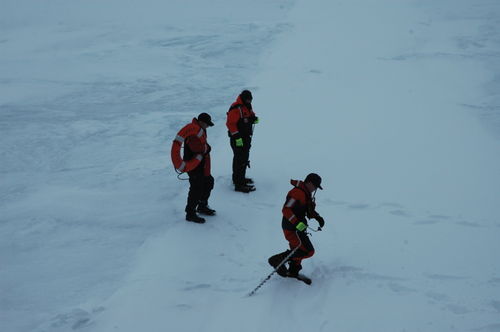
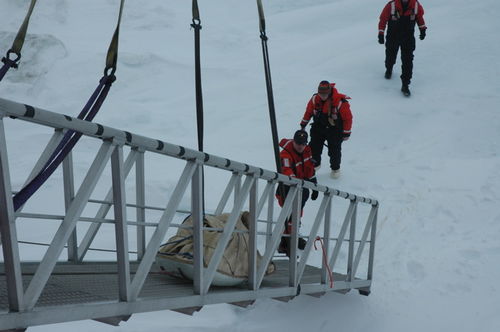
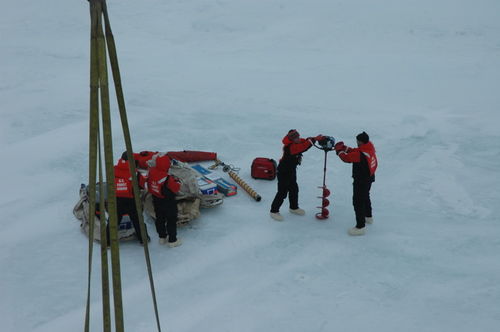
Meanwhile, on the back deck... I was busy getting very dirty with the mud team. We were "multi-coring" again.
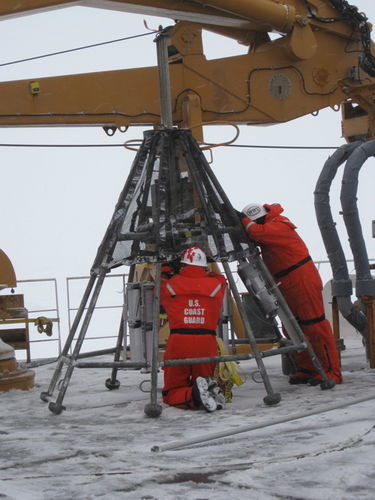
We sent the sampling machine down 72 meters to the ocean floor five times. The lead scientist was very happy that we had collected 16 cores of "good mud" when we were all done. The "cores" are long tubes of sediment and sea water from the bottom or "benthos". The "benthic ecologists" (scientists who study communities of organisms at or near the ocean floor) are studying how the animals that live down in this mud effect the Bering Sea ecosystem as a whole. They believe that the bottom-dwelling organisms play the really important role of cycling the nutrients from the murky depths up to the surface where it can be used by algae in the water column. The nutrients that these guys are getting at down in the ocean floor come from decomposing organic matter that has been deposited there.
(Pop-quiz Oyster-Adams Elementary scientists: What is the difference between organic matter and inorganic matter? That's right, organic means that something is alive or was alive! Inorganic means it never was and never will be. )
Basically, these animals work like the Earthworms of the Bering Sea. The same job that K/1's worms did in their compost bags- is happening all over the ocean floor, all over the world. Just like we watched changes in the compost bags, these scientists are monitoring changes in their samples. The big questions they are looking to answer are how much of an effect do these guys at the bottom have on how productive the ecosystem above is and how are they affected by a changing environment due to climate change?
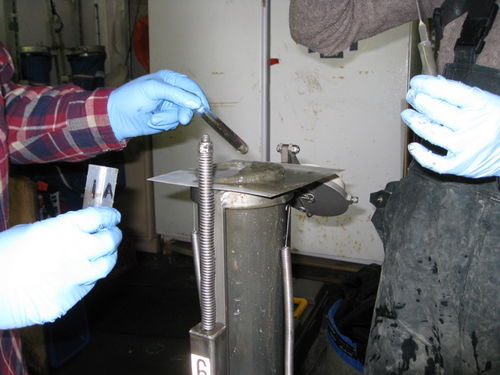
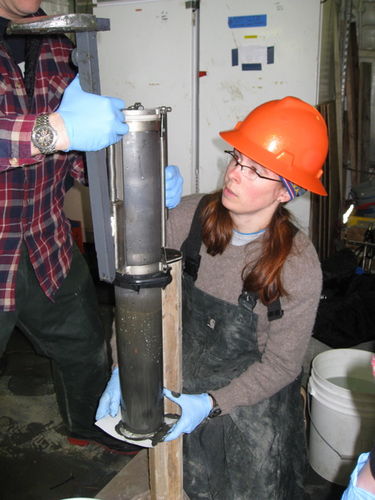
"Walruses off the starboard!" A voice on the ship's intercom gave us the signal that it was time to take a break from the little guys at the bottom of the ocean and spend a few minutes enjoying the big guys at the top who eat them. What started as a few old guys lounging around a hole in the ice turned in to walruses as far as the eye could see! Old and young, (you can tell by the length of their tusks), these walruses looked like they were hot-tubbing! They were relaxing on the ice, then swimming around in the water only to pull themselves back out by their tusks and lounge around a bit more! It's a tough life near the top of the food chain!
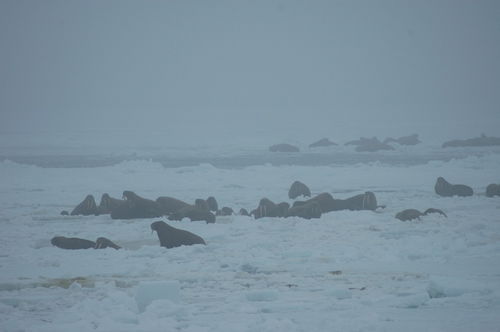
So what's a group of walruses called? A family? A pack? That's right, a pod or even a herd! Adult walruses can weigh up to 4,500 pounds! That's 50 fifth graders! Walruses migrate in the spring and fall following their food. Their favorite meal is found on the ocean floor in the mud. They search for animals called bivalve mollusks, shrimp and crabs. If you have ever had mussels or clams, then you have dined like a walrus. Luckily, you didn't have to dive for dinner or use your snout to find the food! If you ate like a walrus, the restaurant might kick you out. Walruses don't have the best table manners, They use their mouth like a vacuum-cleaner to suck their shelled prey into their mouths. Walruses use their tusks to keep holes on the ice open and to haul themselves in and out of the water. They keep warm with a thick layer of blubber, which can reach nearly 6 inches thick!
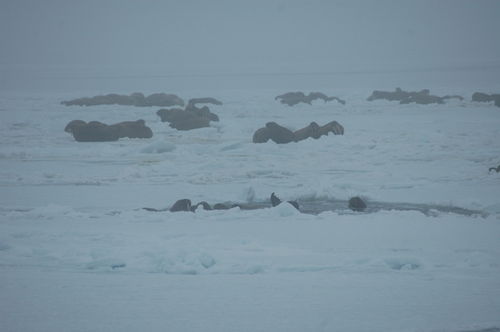
As we are cutting through thick ice tonight, the entire ship is vibrating. It feels like we are a giant jackhammer! We are still heading north so we are likely to find more as we go along. Stay tuned...
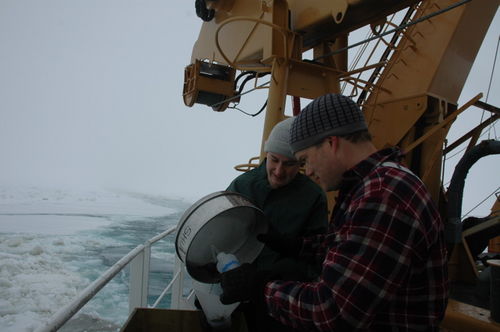
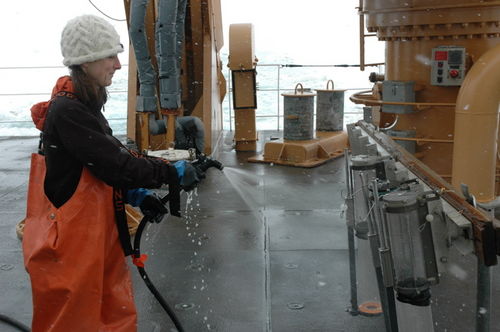


Comments